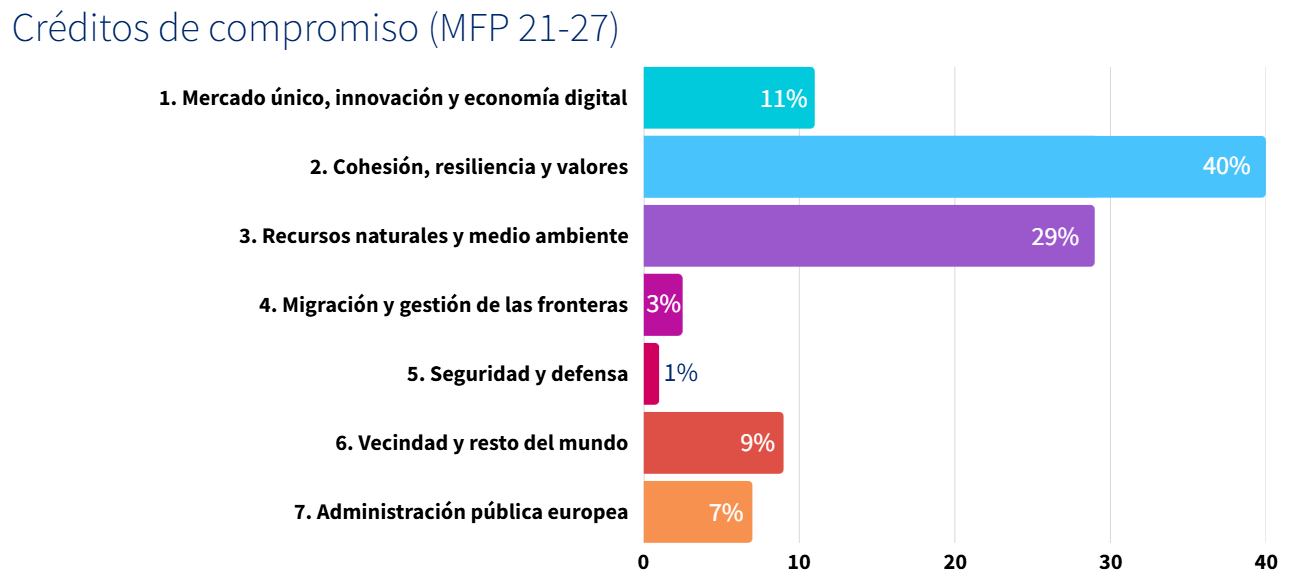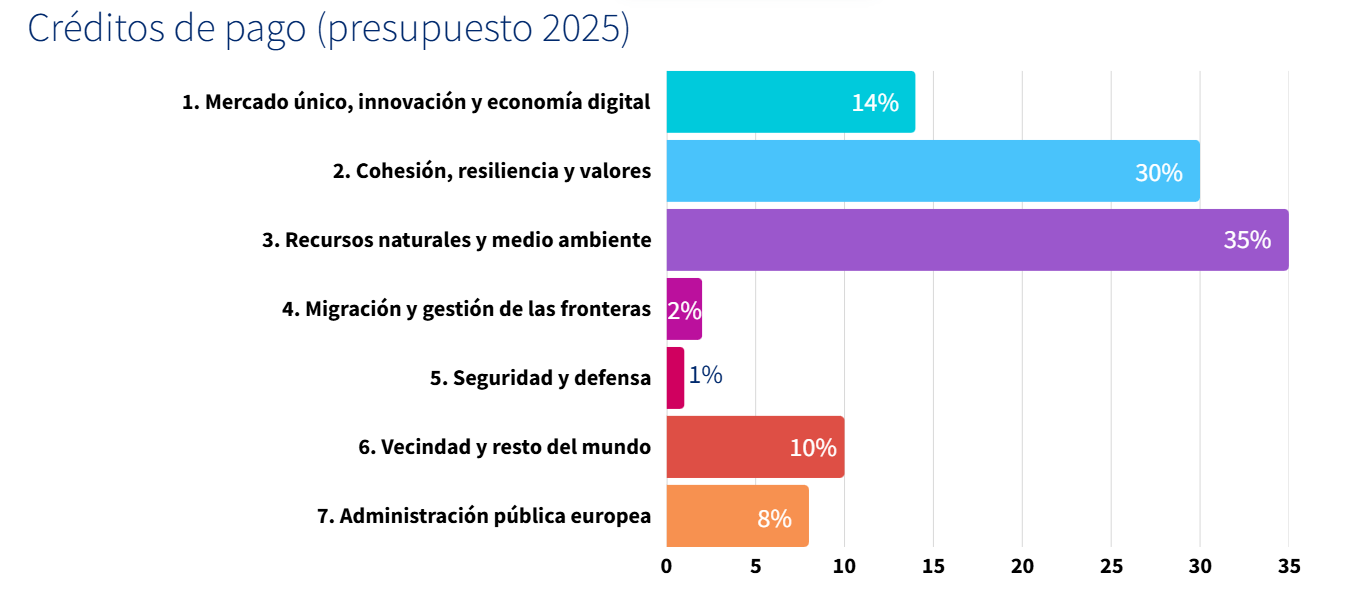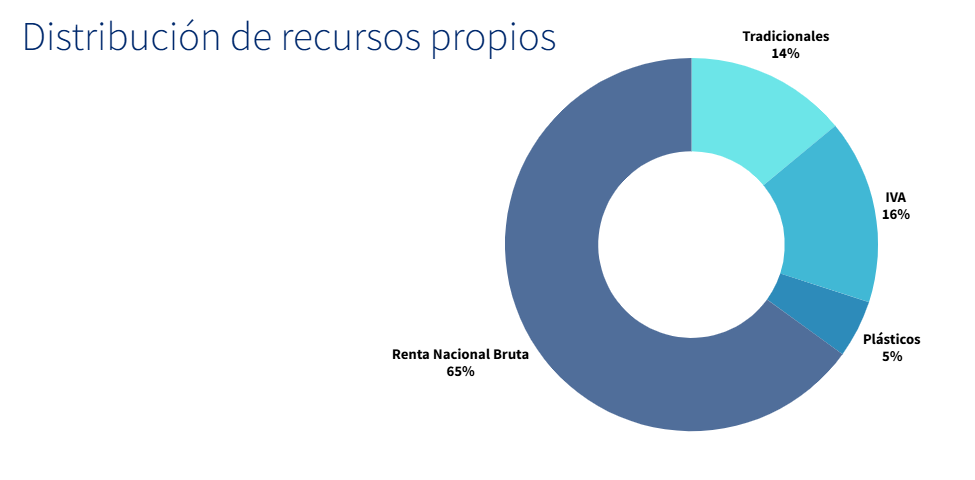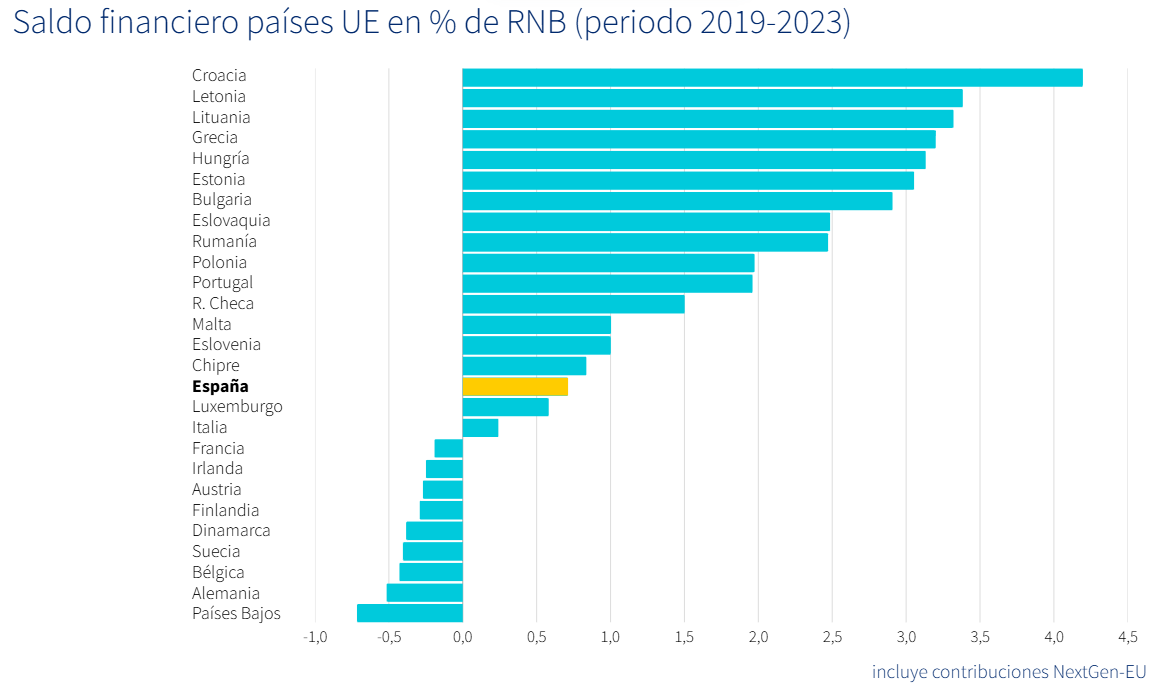Budgetary relations with the EU
Spain’s status as a Member State implies, from a financial perspective, the existence of flows in both directions.
The multiannual financial frameworks (in force for the period 2021-2027) in which the European Union’s annual budget is entered, guarantee the orderly evolution of the Union’s expenditure, within the annual limits established therein. The European Budget is financed mainly by the Member States through their own resources, which are provided in the national budget in the section on budgetary relations with the EU.
Multiannual Financial Framework
The annual budget of the European Union falls within a period of 7 years, which is what is known as the Multiannual Financial Framework (MFF).
The current Multiannual Financial Framework is currently the one covering the years 2021-2027, although it is updated annually. The last revision was carried out in the year 2024.

The main headings are for cohesion policy to reduce disparities between regions and countries (heading 2), as well as for agricultural, fisheries and environmental policy (heading 3).
What is the EU’s long-term budget and how does it affect me? (Video by the European Parliament).
Budget of the European Union
The European Union budget includes all expenditure and revenue of the European Union for a given year, taking into account the limits laid down in the MFF. This budget will have to be approved by both the Council and the European Parliament.
The implementation of approximately half of the budget is the shared responsibility of the EU countries and the Commission.

In the 2025 Budget, payment appropriations totalling almost EUR 150 billion have been approved.
Financing the Budget of the European Union
The European Union (EU) is financed through a system of own resources, which are the sources of income that the EU uses to finance its budget. These own resources are limited by law to a maximum of 1.4% of the Union’s Gross National Income (GNI) for payment appropriations and the limit has been increased to 1.46% for commitment appropriations, following the COVID crisis and the approval of NextGenerationEU funds.

Traditional own resources
These are customs duties on imports. Twenty-five per cent of these rights are retained by member countries as administrative costs

Resource VAT
They are based on a rate of 0.3% on the harmonised VAT basis of each EU country, with a maximum of 50% of GNI

Plastic based resource
A uniform rate of EUR 0.80 per kilogram for non-recycled plastics is applied (with annual flat-rate reductions for 17 Member States whose GNI is below the EU average)

Gross National Income
Each EU country contributes a percentage of its GNI to the EU, with the aim of having overall revenues cover payments agreed for a balanced budget.
In addition to these own resources, the EU can, on an exceptional basis, obtain funds through loans on international capital markets. On 21 July 2020 the European Council agreed to create an exceptional temporary recovery instrument known as NextGenerationEU, which authorises the European Commission to issue up to EUR 750 billion of debt on behalf of the Union.

On the table, it is being negotiated to use part of the revenue from the Community Emissions Allowance Scheme (ETS), the use of the revenue from the Carbon Adjustment Facility (CBAM) or the introduction of a temporary statistical resource of its own based on business profits.
Spain-European Union financial relations
Spain’s status as a Member State of the European Union implies, from a financial perspective, the existence of two-way flows: on the one hand, Spain contributes to the financing of the European Union and its budget and, on the other hand, the European Union, in application of its policies, transfers funds to our country, through direct, indirect or shared management.
The annual Spanish contribution to the European Union is reflected in the General State Budgets, on the basis of contributions to the EU budget: the contribution for own resources, mainly, and others (provision of services, fines and sanctions, interest on arrears, macro-financial assistance to Ukraine).
For its part, the European Union makes annual payments to Spain for actions in our country, among which are:

Transfers received from the Structural Funds (ERDF, ESF+, …)

The European Maritime Fund for Fisheries and Aquaculture and other agricultural and fisheries resources for actions co-financed with the State
Its comparison makes it possible to establish an annual financial balance between Spain and the European Union.
More information on these transfers can be found in the annual publication of the Financial Relations between Spain and the European Union.
